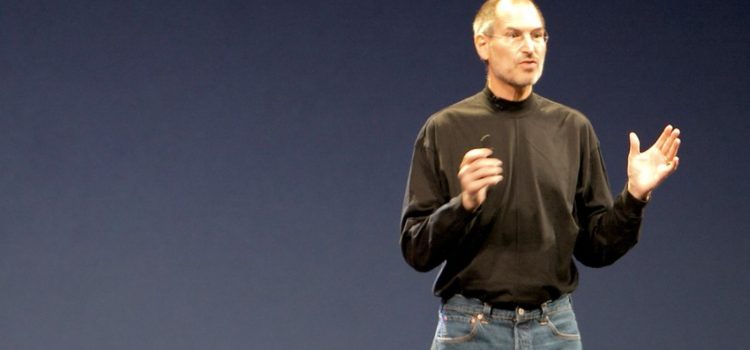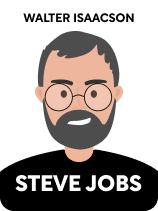

This article is an excerpt from the Shortform book guide to "Steve Jobs" by Walter Isaacson. Shortform has the world's best summaries and analyses of books you should be reading.
Like this article? Sign up for a free trial here.
How was Apple influenced by Steve Jobs’s innovation? What set Jobs apart from other entrepreneurs?
The book Steve Jobs by Walter Isaacson details how Jobs became so successful with Apple. Isaacson says that one of these reasons is because Jobs relied on innovation to create something fresh and exciting.
Let’s look at how innovative thinking can get things done.
Steve Jobs’s Radical Innovation
Isaacson claims that what set Steve Jobs apart as a technological pioneer wasn’t any skill as an engineer or programmer but his ability to imagine the future before it arrived. Steve Jobs’s innovation was fostered by the anarchistic counterculture of the 1960s and ’70s, in which rules and norms were routinely circumvented. Jobs embraced the counterculture’s emphasis on spiritual growth, which led to his belief that intuition is more powerful than intellect. His confidence in the strength of his own intuition let him see possibilities that others would miss.
(Shortform note: Jobs was not alone among radical thinkers in valuing the power of intuition. Albert Einstein had much to say on the subject, including his famous quote, “Imagination is more important than knowledge.” In Blink, Malcolm Gladwell describes how “snap judgments” can be made more effective, and he argues that intuitive decision-making can often be more powerful than a drawn-out, conscious thought process.)
To illustrate Jobs’s forward-looking innovation, when he was first shown Xerox’s graphical user interface, he didn’t just see it as a clever new system. Rather, says Isaacson, Jobs immediately intuited what all computers of the future would look like, and at Apple, he developed the GUI concept far beyond what Xerox had created into the point-and-click interface we all use today.
Isaacson makes it clear that Jobs wasn’t a perfect oracle, but when he misstepped trends in computing, his response was to take the next leap ahead. For instance, Jobs failed to anticipate the popularity of burning music to CDs in the early 2000s—the iMac included a CD-ROM drive, but not with the ability to make music CDs. Instead of redesigning the iMac, Jobs moved forward to the next stage of music, the MP3 player. The launch of the iPod quickly made user-created CDs obsolete.
(Shortform note: In Blue Ocean Strategy, business professors W. Chan Kim and Renée Mauborgne argue that to stay ahead of current trends in business, it’s necessary to imagine what the market will look like if trends are taken to their logical conclusions, as Jobs did while the music industry was changing. Kim and Mauborgne also advise leaning into both functionality and emotion, which Jobs made the cornerstones of all of his product designs.)
Instead of resting on the iPod’s success, Isaacson shows that Jobs was still looking to the future, particularly toward the cell phone market. Cell phones already had built-in cameras, and he knew that as soon as they incorporated music players they would kill the market for the iPod. Therefore, Jobs chose to get there first with the iPhone. Coupled with the iPad tablet, which came out shortly after, Jobs helped steer the digital age away from PCs as the primary computing devices of choice.
(Shortform note: While desktop computers are still omnipresent, the years since Jobs’s death have shown a steady decline in PC purchases, while the sales of tablets and smartphones have risen. Portability seems to be the key. The intervening years have also seen the growth of hybrid laptops with detachable keyboards that blend the features of PCs and tablets.)
But Jobs didn’t see these as separate devices. According to Isaacson, Jobs envisioned an information landscape in which a desktop computer would serve as a “hub” for all of a user’s devices. This allowed for seamless integration from one device to another—an album or ebook bought on your iMac would instantly transfer to your tablet or phone. Toward the end of his life, Jobs believed that the hub for a person’s devices would no longer be their PC at all, but would move into the cloud.
(Shortform note: The basic concept of cloud computing, the online hosting of software and data, goes back to the development of the internet itself. Amazon pioneered the modern form of cloud computing in 2003 with Amazon Web Services, while the popular cloud storage app Dropbox launched in 2007. Apple introduced its iCloud service in 2011 as a means for users to access both their files and applications remotely, preceding Google Drive by a year.)
While it can’t be said that Jobs created these trends, Isaacson illustrates Jobs’s uncanny ability to intuit future shifts in computing and position his company ahead of its competitors.

———End of Preview———
Like what you just read? Read the rest of the world's best book summary and analysis of Walter Isaacson's "Steve Jobs" at Shortform.
Here's what you'll find in our full Steve Jobs summary:
- A no-fluff look into the life of Steve Jobs
- How Jobs changed the technology landscape
- What it was like to work with and for Steve Jobs






